Sorry I took a few weeks off of writing this newsletter! Hunter had E. coli (origin unknown), which put a damper on the whole “eating” thing, and then I went to Spain, which was very good for the whole “eating” thing but not for writing newsletters. This is the first of what will likely be at least a couple recap posts, and it’s dedicated entirely to what was, if not necessarily the best meal of the trip, certainly the most noteworthy and intensive.
We flew into and out of Madrid, where we spent the last few days of the trip with friends. But before that, we did a speed run through the major cities of Andalusia, the country’s southernmost region that spent much of the Middle Ages under Muslim rule, a legacy that survives in everything from the architecture to the music to, of course, the food.
For our fancy meal of the trip — we usually do one per — we settled on Noor, a fine dining restaurant located in Córdoba, formerly the capital of what was then known as al-Andalus. Noor also has the distinction of earning three stars from the Michelin guide, the highest honor bestowed by the tire company turned tourism board extortion racket. (Due to said scheme, I’m dubious of Michelin ratings in California but trust it in places like Europe or Japan where it’s been operating for a long time.) Here’s what the guide has to say about the place:
Meaning “light” in Arabic, Noor is so much more than a fine-dining restaurant. Behind every detail there is a multi-faceted team that contributes its knowledge to bring to the fore the essence of the cultured and magical city of Córdoba, which has been a beacon of light since the reign of Caliph Abd al-Rahman III. In the restaurant's bright interior, with its open kitchen and incredible interior design, chef Paco Morales (ably supported by second in command Paola Gualandi) revives the spirit of Andalusian cuisine using modern ideas and techniques.
I’d never actually been to a three-star restaurant before. To be honest, ultra-fine dining is not the kind of experience I seek out every day, week, or month, and doubt I would even if I could afford it. It’s simply not a relaxed environment in which to enjoy a meal — nor should it be, because an armada of staff have been trained and paid to oversee every painstakingly planned detail of your experience. For me, it’s more about appreciating the craft and labor on display, which I have just enough experience and knowledge to do.
On that front, Noor certainly delivered. Before you even enter the dining room, a windowless space towered over by a swoopily ornate wooden sculpture, you wash your hands with orange blossom water in a custom sink made out of rocks. And before you eat a single bite, you’re treated to a bit of show-and-tell: a diorama of the ingredients on display in that night’s menu, plus a timeline of the restaurant. When Noor opened, it used only medieval ingredients from before the Columbian exchange. It’s since progressed forward through the eras; our menu was inspired by the 18th century, working in new world produce like pineapple. (Thank God, honestly — between tomatoes, peppers, potatoes and all the violent, racist resource extraction, Europe got the better end of that deal in more ways than one.)
The theatricality was A Lot, of course, but that’s part of what you’re paying for: dinner and a show. I honestly wish we got a bit more, because while every staffer we interacted with spoke English, there was just enough of a language gap that I don’t think we got the full rundown of how each dish reflected Andalusian history and traditions.
I won’t bore you by breaking down every dish in detail, but this was the menu, signed by the chef and sent home with us as a keepsake:
The food was, overall, very good — although, to do my best impression of a character from “The Menu,” a place like this sort of defies a binary like good vs. bad, or at least renders it irrelevant. I’m looking more for interesting or technically impressive, because frankly, even if I taste the most addictive and straightforwardly tasty dish of my life in that sort of atmosphere, I’ll never be in a position to go back and order it over and over again the way I would at a local burrito joint. (Love you, Sonoratown.) I want something that will stay with me as I look back over the years on a singular event. And while I frankly have no desire to taste the flavor combination of grapefruit, impeccably cooked shrimp and “blue cheese snow” ever again, I was surprised enough by the combination of bitter, fresh and funky to remember it clearly several weeks later.
That sounds backhanded, or at least like throat-clearing. But I don’t need any qualifiers for what was probably the plate of the night: a pair of silky-but-firm oysters in an earthy, ferrous spinach sauce. The menu promised “pine nuts”; those tan, geometric molds studded around the plate are actually dots of savory pine nut ice cream. In a million years, I could neither conceive of that dish nor pull it off. And if I could, I wouldn’t have the work ethic to assemble each individual component over at least 24 hours.
As you can tell from that photo, the stoneware and other accessories felt just as important to the overall effect as the food. We were sitting next to the silverware station, and as each course saw a completely new table setting for each of the 25-ish diners, it was fun to watch it gradually depopulate over the course of the night. I’m sure the ceramics were local — there’s an entire museum dedicated to the industry in Seville — and the placemat above as well as various other doo-dads appeared to be custom 3D-printed. Just look at this amuse bouche trio, or more specifically, what it’s served on.
I find that with tasting menus, the smaller bites at the beginning tend to be more innovative than the entree-ish stuff at the end, which gives into the pressure to deliver a big piece of fancy protein with some garnish around the edges. That proved to be the case here, leading to some bizarre choices like covering some extraordinary braised lamb shoulder with a piece of seared wagyu that, while good, tasted like every other piece of seared wagyu served at a nice restaurant. Yes, in this case the afterthought garnish to the protein was another protein.
On the other hand, there was this quasi-raviolo made of razor-thin tuna belly draped over tuna stew (DOUBLE TUNA) with a green peppercorn sauce. It’s the work of a madman, and it made my eyes bulge when I tasted it.
I’m enough of a freak about these things to enjoy a meal that makes me think — where I sit up straight when each new course arrives, eagerly awaiting the explanatory spiel. It’s worth the money in the way a fancy degree is worth the money: sure, there’s homework, but you’re also paying to be educated. I learned, for instance, that carob is more than just a hippie substitute for chocolate, because this tart is the first time I’ve had it in any form since elementary school.
And I learned that a dessert flight tastes better when it’s presented to you in the form of a ziggurat.
Noor is located in a working class district of Córdoba where Morales grew up. It’s a cool 40-minute walk from the city center, which Hunter and I broke up by getting a drink in a plaza where the most popular business sold buckets of snails with beer. Noor feels a world away from both its immediate surroundings and the way we typically ate in Spain, noshing on a reliable roster of national staples in open-air plazas with warmly neglectful service.
That distance is both a selling point and a signal that this isn’t and shouldn’t be an everyday outing. We actually have a second three-star meal booked in 2025, and while it’s over six months away, it still feels indulgent to have multiple such plans in one calendar year. The immersion is so total, the succession of new stimuli so close to overwhelming, that it’s enough to last you a good long while.
And yeah, it’s a little ridiculous. The chef sent us home with a postcard of his face! I never want to lose sight of how hilarious that is.

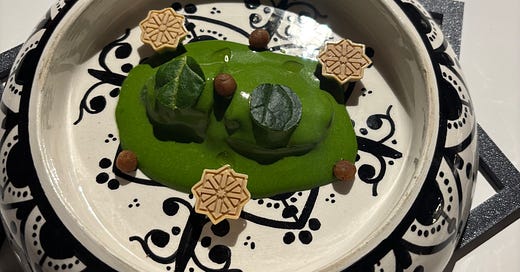


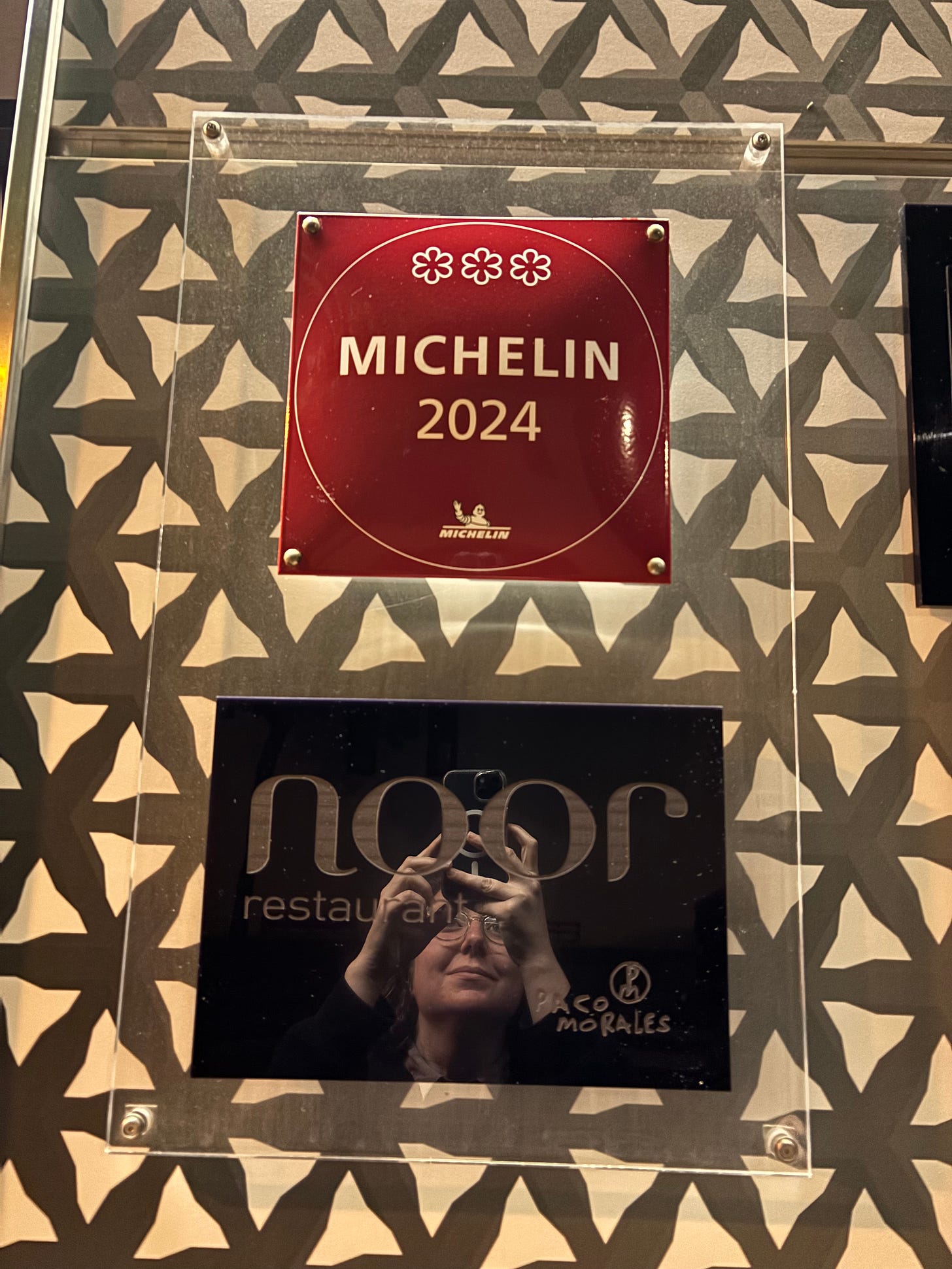
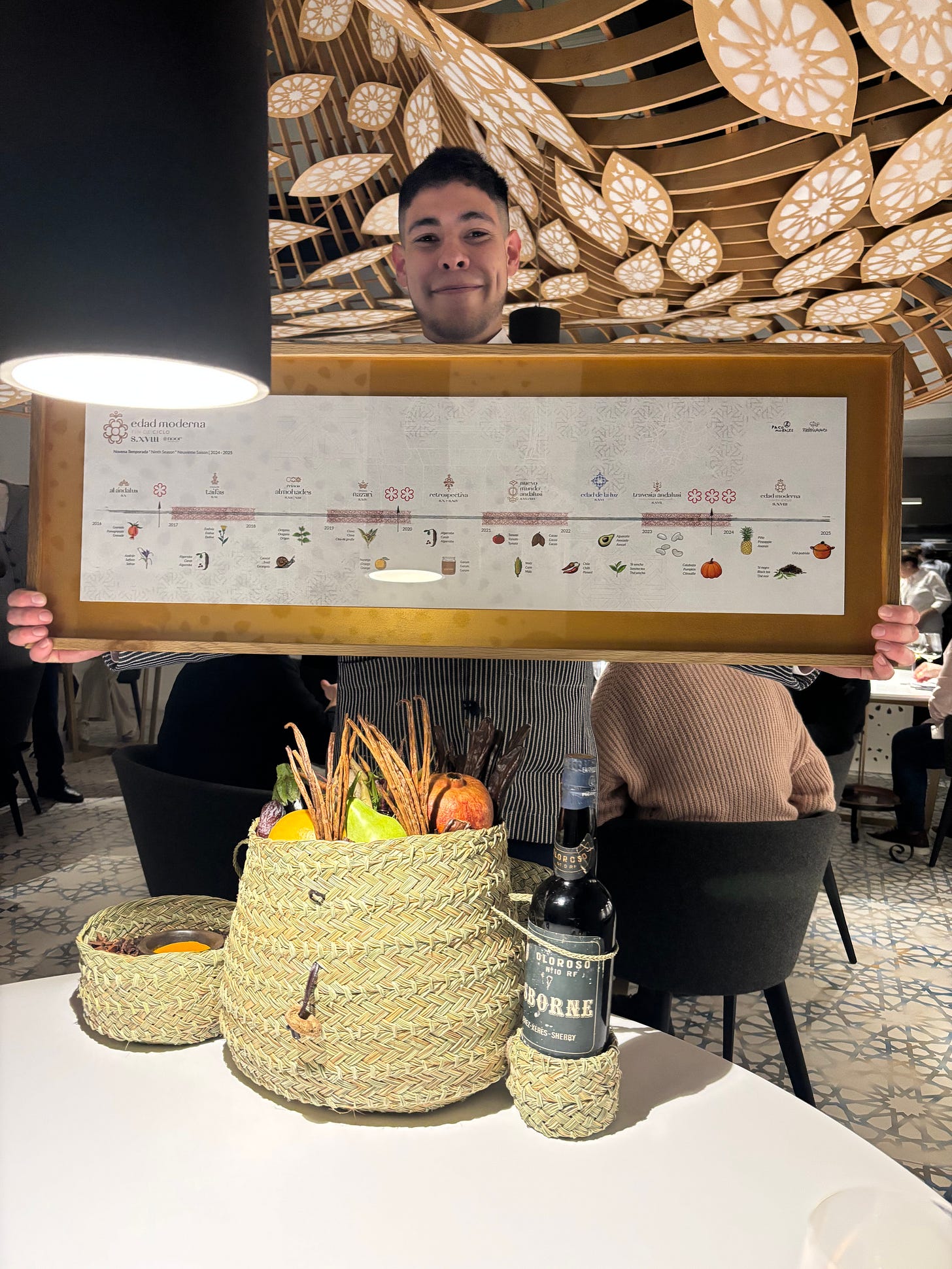
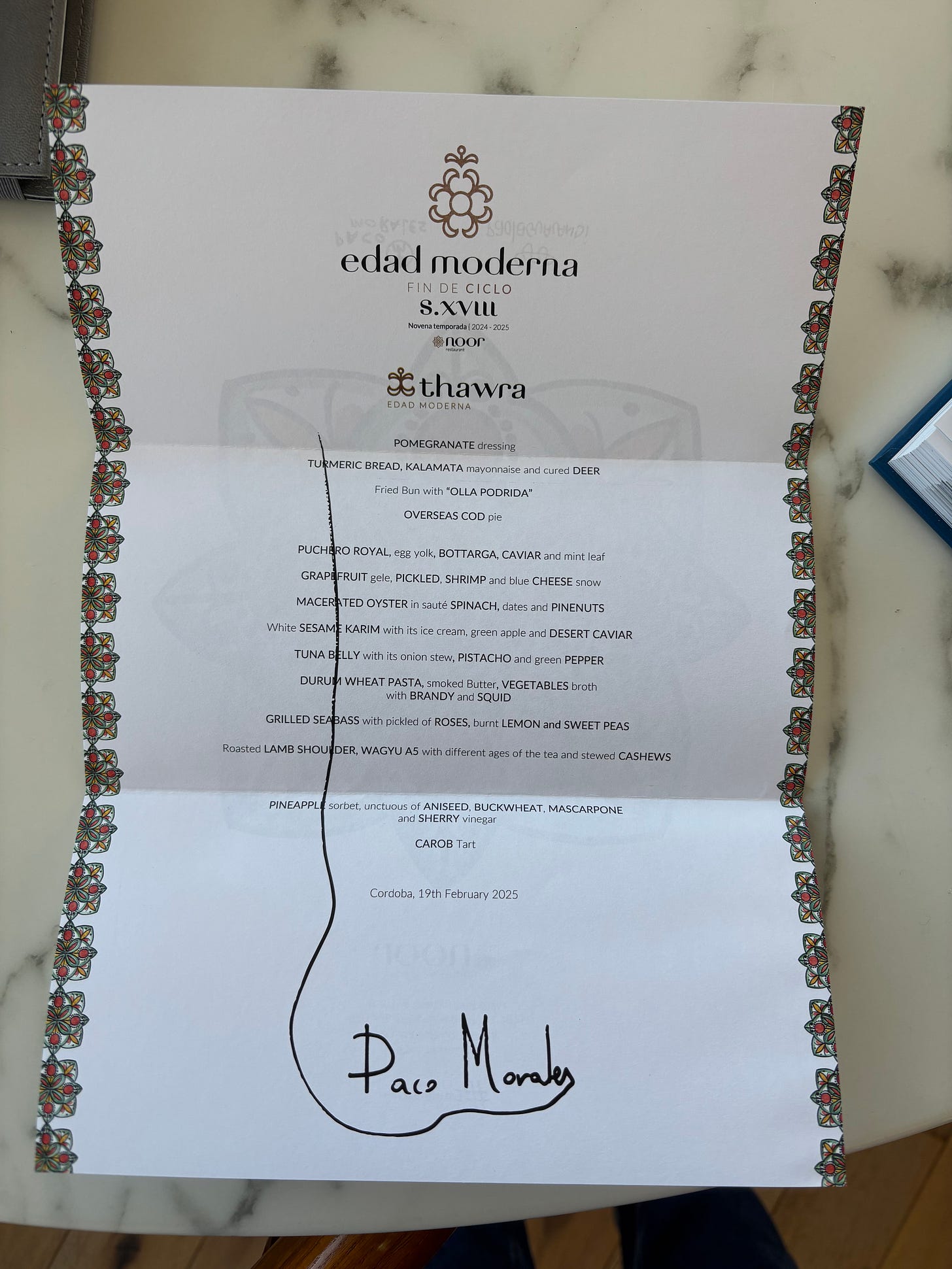

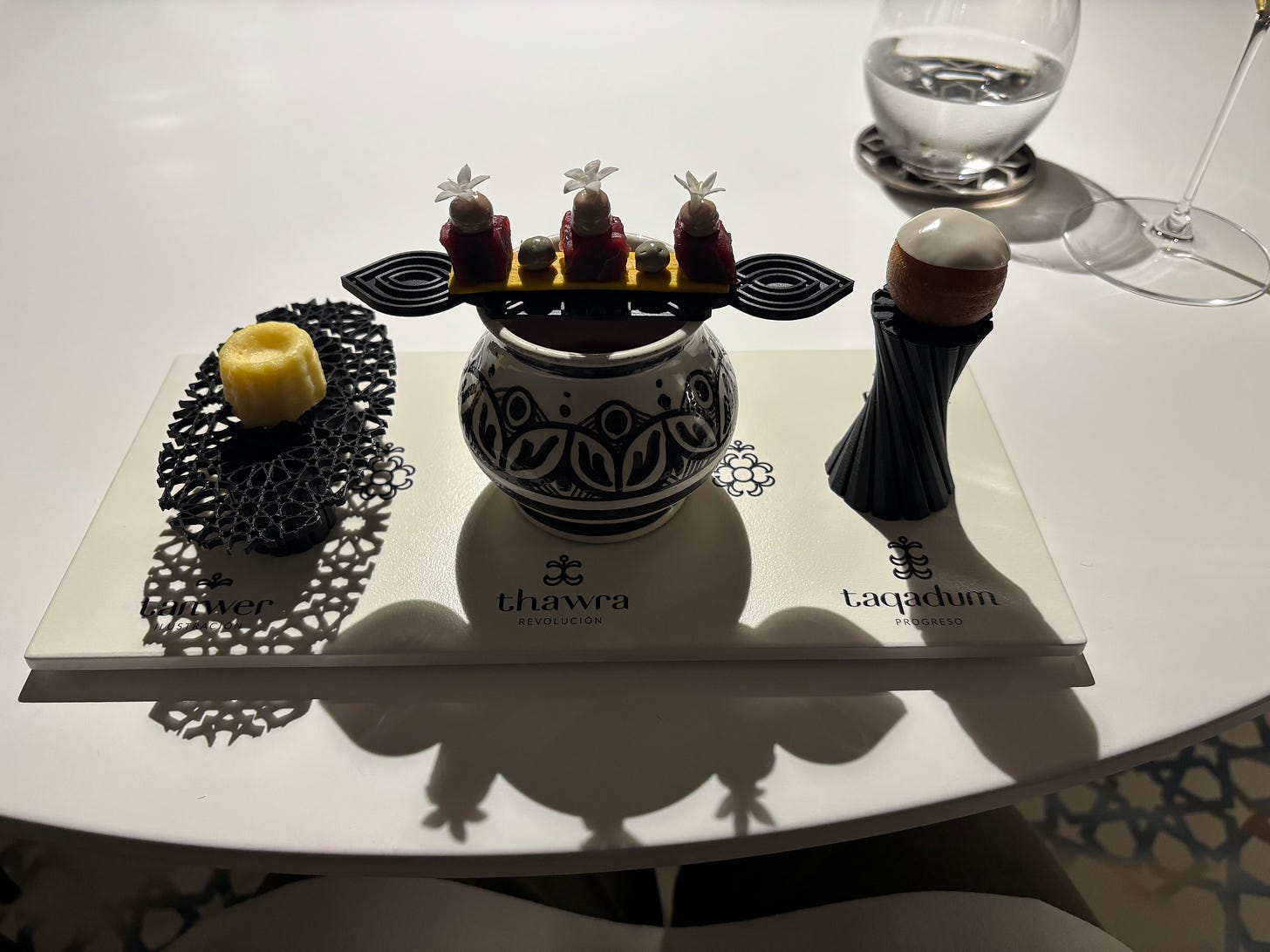
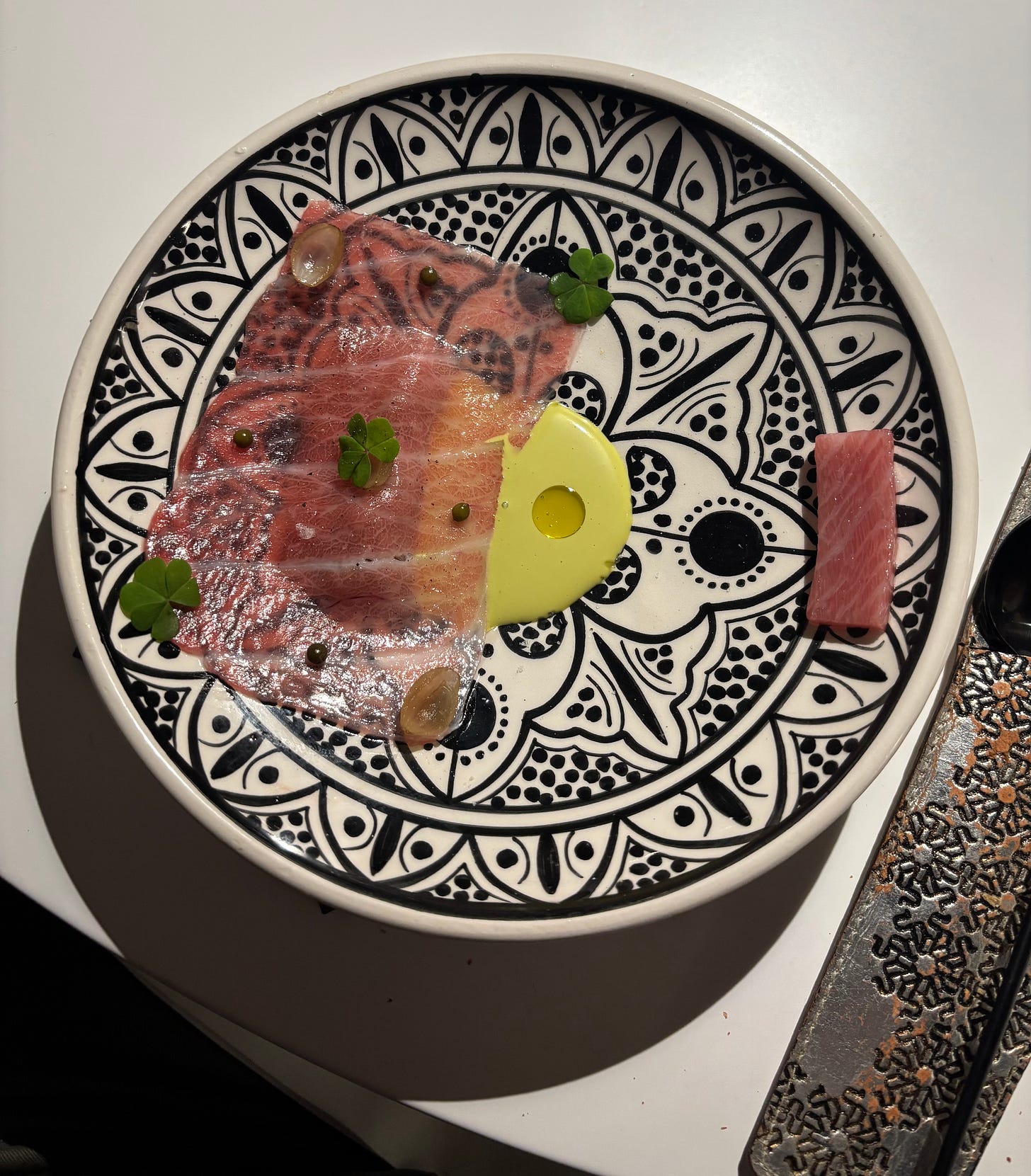
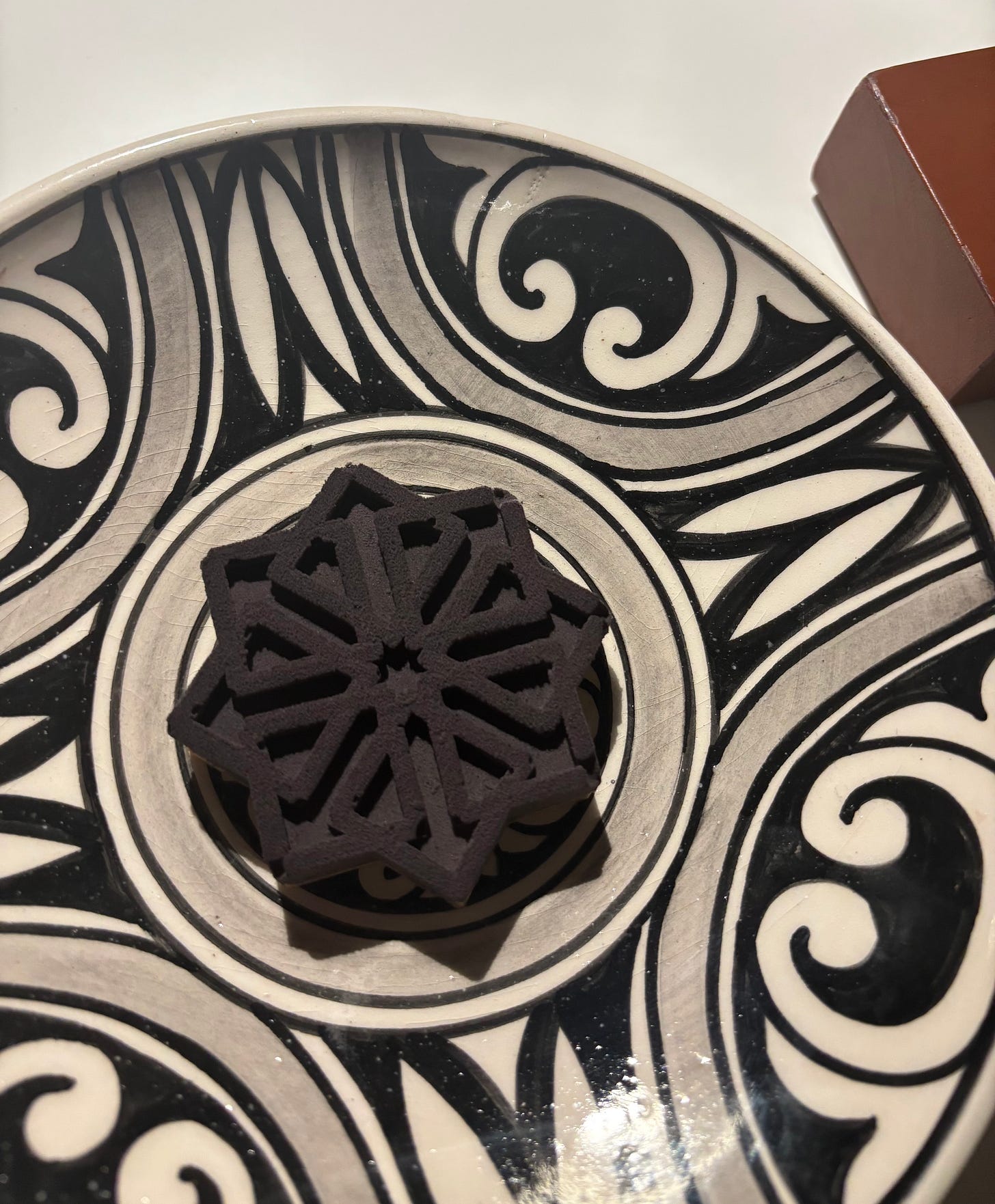
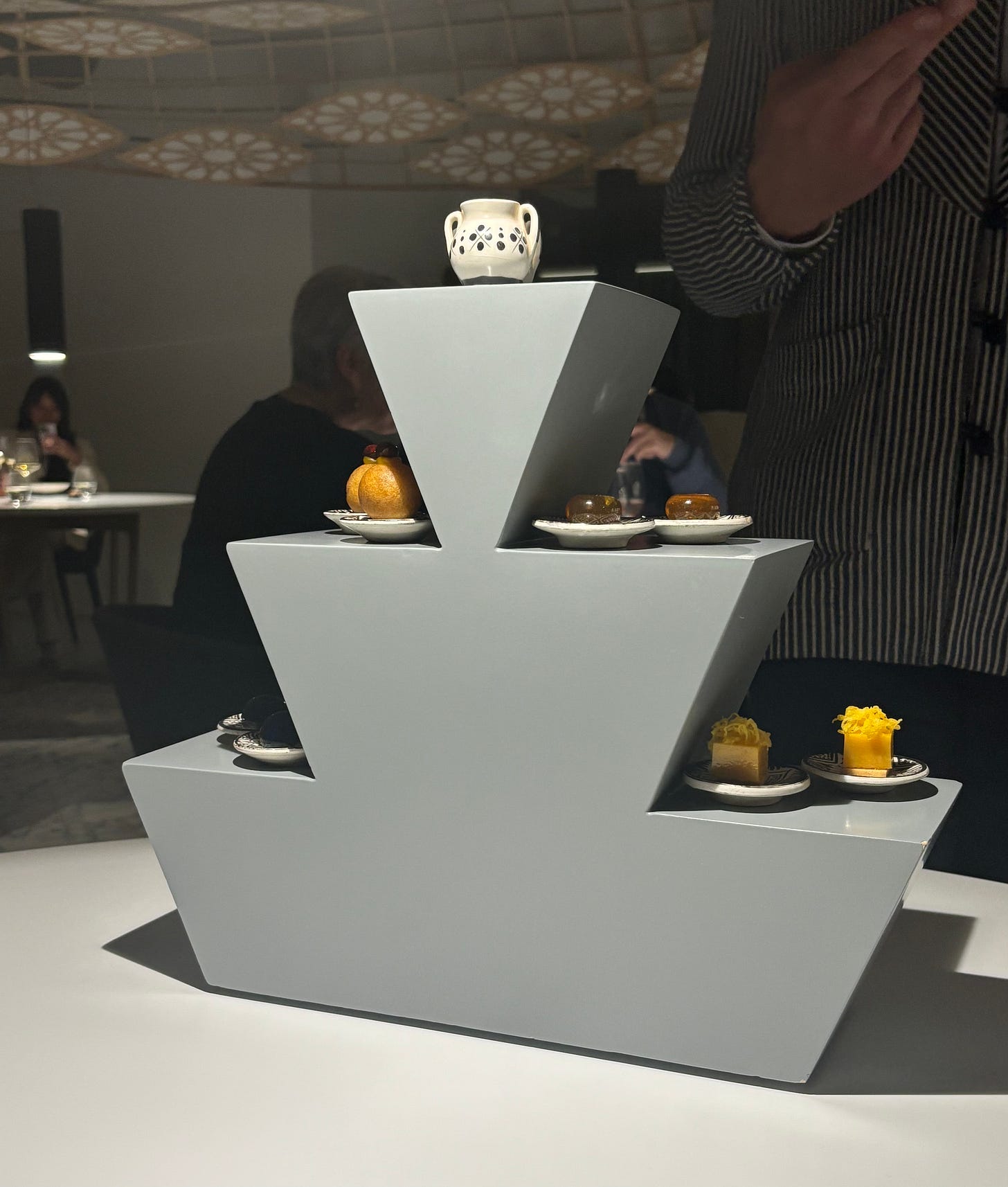
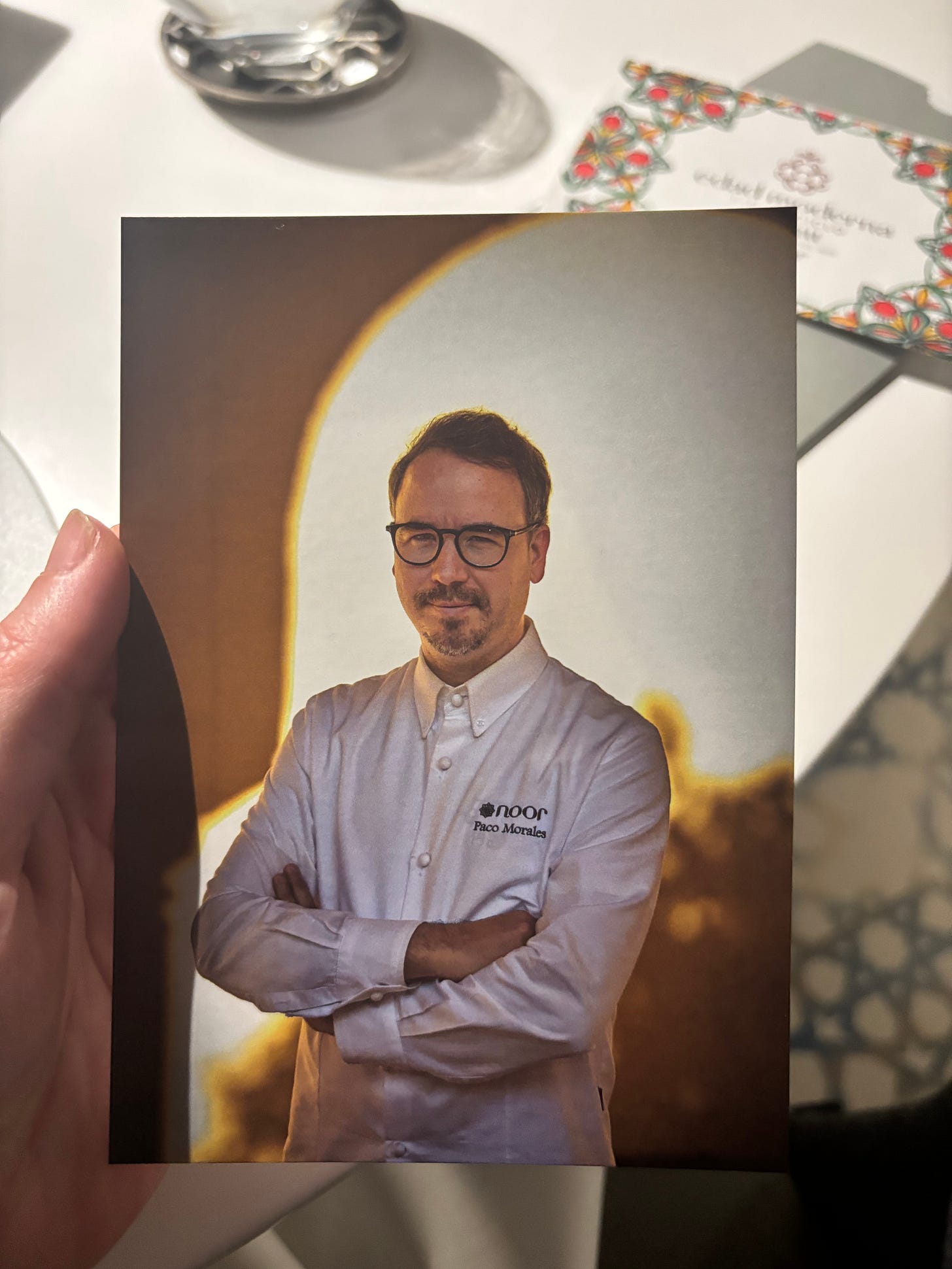
Nice articles, I am curious if they offer ended interesting nonalcoholic drinks? Interesting teas, juices, etc?